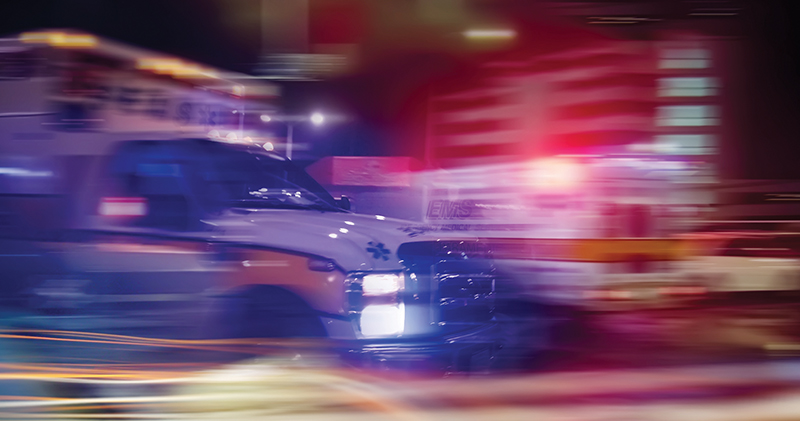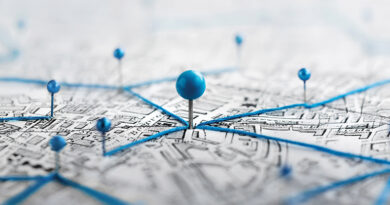IoT to Improve Emergency Services
By Chuck Chapman
There are several emerging technologies that will improve emergency management in cities and municipalities. These emerging technologies will better their service to their constituents and personnel through the deployment of Smart City solutions. The integration of intelligent IoT solutions sounds easy, but it is complicated as there are so many ways to solve the same issue.
The ITU Smart Sustainable Cities Focus Group describes a Smart City as follows: “A smart sustainable city is an innovative city that uses information and communication technologies (ICTs) and other means to improve quality of life, efficiency of urban operation and services, and competitiveness, while ensuring that it meets the needs of present and future generations with respect to economic, social and environmental aspects.” This is a good definition , but the National Institute of Standards and Technology (NIST) is researching just how involved these processes are and is working to develop a framework and best practices around deploying these smart city projects trying to identify best in class solutions for each defined opportunity through their IoT-Enabled Smart Cities Framework (“IES-City Framework”).
As I started to work on this article, I realized just how complicated integrating two diverse IoT solutions can be. Smart Cities and e-health have similarities and differences. They both deal with people, organizations working to make life better. Smart Cities solutions deal with improving communications, infrastructure, transportation, and items revolving around municipalities and their constituents. E-health focuses on the three areas related to health of patients, providers and insurance. There are some significant synergies in these two disparate solutions.
- They both leverage connected technologies.
- They promise to improve lifestyle and efficiency.
Smart City solutions provide for improvements in communications, data gathering, and infrastructure:
- Providing the best communications solutions within their own systems and to their constituents.
- Understanding transportation and optimizing its utilization through improved traffic flow and efficiency.
- Understanding their resources and leveraging them to the best extent.
- Ultimately improving system efficiency, positively impacting the environment, and best leveraging the resources they have.
E-health provides solutions that improve the interaction among providers, patients, and their insurance providers. Some of the solutions include:
- Remote doctor visits and consultations.
- Remote real time health diagnostic tools.
- Remote diagnostic labs
- Deployed health sensors
- E-commerce and billing.
Requirements for both solutions:
- Reliable real time communications for both entities and sensors
- Sensor solutions to understand the current situations
- Location information on resources and goals
There are many deployments that can leverage a tight integration of Smart Cities and e-health solutions:
- Municipal understanding of available medical resources like vaccines and antivenom and the assurance of their viability through cold chain monitoring.
- Real time management of catastrophic resources like power and transportation to assure medical facilities are operational and utilized.
- Coordinated response plan that optimizes the dispatch of resources assuring that infrastructure is adjusted to promote success in critical situations. Though this can be as simple as understanding a patient’s blood type or allergies, a larger scale plausible example follows:
Example of plausible Smart City and e-health enabled scenario
Intelligent handling of critical situation — a person has a heart attack while driving.
In traffic this can cause an accident, maybe a minor fender bender, but the person having the heart attack is in desperate need of assistance.
- If the person had previously had this type of medical condition, monitoring sensors used to track their health could pick up the subtle details and notify their health care provider of an issue.
- Changes in heart rate, blood pressure and blood chemistry
- The vehicle and possibly the patient’s health sensors could also identify the impact.
- GPS, accelerometers, and impact sensors would identify the conditions of the impact.
- At the same time, traffic cameras using AI can identify the accident occurrence. These systems would immediately create metadata to a city monitoring station where the camera information can be analyzed to determine the extent of the damage to vehicles, infrastructure, and traffic patterns.
- The city’s monitoring station personnel would then dispatch the correct support vehicles, equipment, and personnel to the accident, leveraging real time data of their location and traffic patterns. All entities could be monitored as well.
- The emergency vehicles are monitored for mechanical issues and maintenance
- The stock of medicine and life support equipment is ensured as RFID and Bluetooth monitoring can assure they’re ready or available
- Personnel are identified and both their credentials (capabilities) and viability can be tracked through RFID badges and real time information
- Dispatch has already determined the best route for the emergency vehicle to take and in real time can modify the traffic light phasing to reduce their time to the accident location.
- It is also possible that the patient and accident victim’s health care professionals have notified emergency response systems through 911. Their system has identified the victim has experienced a heart attack episode and that an impact has occurred.
- The connected vehicle monitoring system has also notified emergency response of the collision and that the person is unresponsive.
- This collected information is relayed to the emergency medical personnel, so they are aware of the patient, their condition, the vehicle description where the affect patient is located and are prepared to triage the patient on arrival, possibly even collecting real time health information as they are travelling.
- The emergency personnel arrive onsite. They immediately go to the heart attack patient’s vehicle. They may be able to locally connect to the patient’s internal health monitoring system and obtain detailed information immediately. With this information they can quickly choose the correct equipment and medication to deal with the situation. This can be further enhanced as the patient’s physician and medical history (height, weight, blood type, etc.) can be accessed through the connected systems.
- Upon triaging the patient, they can be notified of the best hospital or health care facility to take the patient to — understanding not only the patient’s condition, but their health care provider information to best address the patients’ health and financial concerns.
- Advanced directive information is defined by the patient, provider, and insurer. The Patient Self Direction Act of 1990-based information can be kept and conveyed electronically if the patient is nonresponsive. The details of living wills, health care surrogate, and anatomical donations can be quickly accessed, and their directives used in the patient’s treatment.
If any other people were injured by the accident, their health concerns could be covered similarly using the same solutions.
The above scenario requires a highly advanced and tight integration of potential Smart City and e-health solutions Utopia — yes, plausible — yes, easy — no…
For this solution to work the city would have to deploy from one to several robust communications systems with coverage throughout the city. They would have to assure these communications systems are HIPAA compliant. There would have to be a full deployment of traffic control and surveillance. Their emergency systems would have to be outfitted with sensors, and procedures put in place to make sure they were used to their fullest extent. The city, health care providers, insurance providers, and vehicle monitoring companies would have to put agreements in place allowing for the exchange of information and security protocols used throughout. The best part is that these same health care and Smart City solutions could improve many aspects of health all the way down to snake bites and bee stings.
Though this may seem like an insurmountable task — what is the cost of a life?
Opportunities for the cable operator
Operators have deployed dependable and secure infrastructure that enables many of these features through direct connectivity. Many of the mobile and point solutions would be wireless. These edge solutions have unique requirements driven by their small size, economic constraints, and demand for long power cycles. RFID, Bluetooth and LoRaWAN enable these technologies. Some may require intermediary device communication solutions like cellular or secure Wi-Fi which again can be supported by the cable operator’s infrastructure. Some examples include:
- HIPAA compliant fiber and BSOD wireline deployments between entities and agencies.
- Edge deployments of surveillance and optical based sensor systems.
- Operator hosted Wi-Fi using a secure private SSID and HIPAA enabled security elements.
- Operator hosted LoRaWAN deployments.
- Operator hosted small cell and private cellular solutions.
- Cable operator sales and support personnel and systems to assure operation and security.
It is a new world of opportunity for the cable industry as these new solutions become commonplace.

Chuck Chapman,
Technical Sales and Support,
Outback Power/Alpha Technologies/Enersys
Chuck has worked in the cable telecommunications industry and automation for more than 30 years, and has a diverse background in RF, test, measurement, telemetry and automation. An entrepreneur in multiple areas, he joined Cheetah Technologies in 1994 and served as senior systems engineer through the company’s acquisition by Alpha Technologies. He is acting chair of the IoT Smart Cities working group in the Data Standards Subcommittee of the SCTE•ISBE Standards program.
Shutterstock



